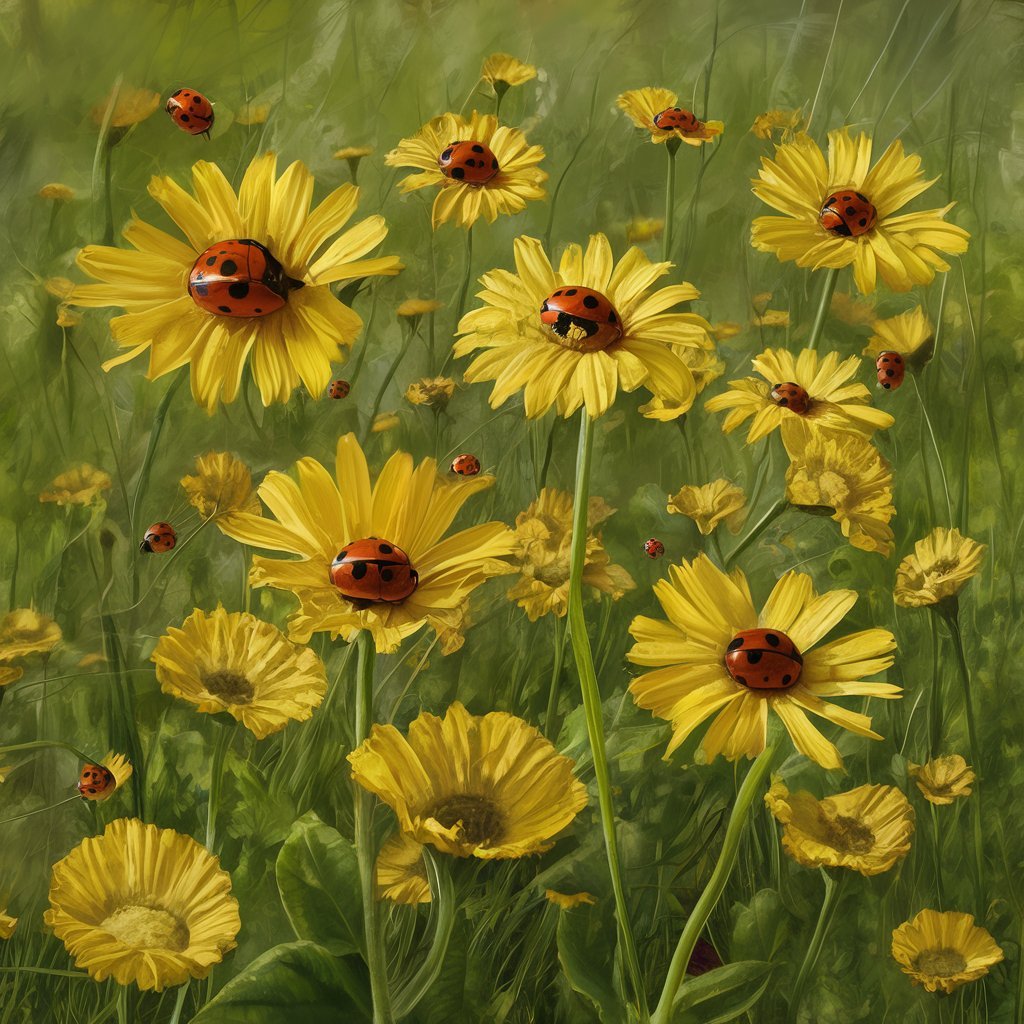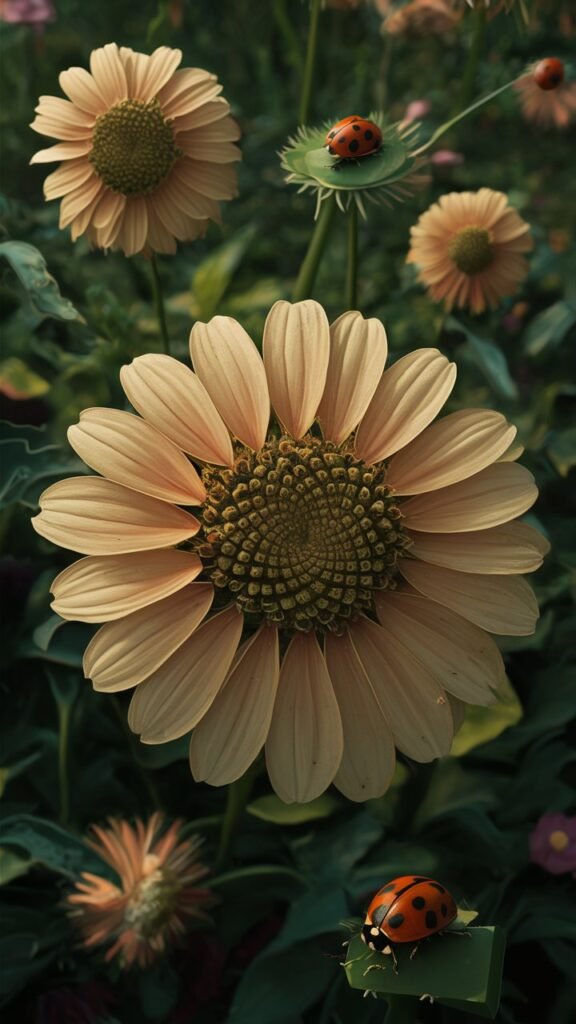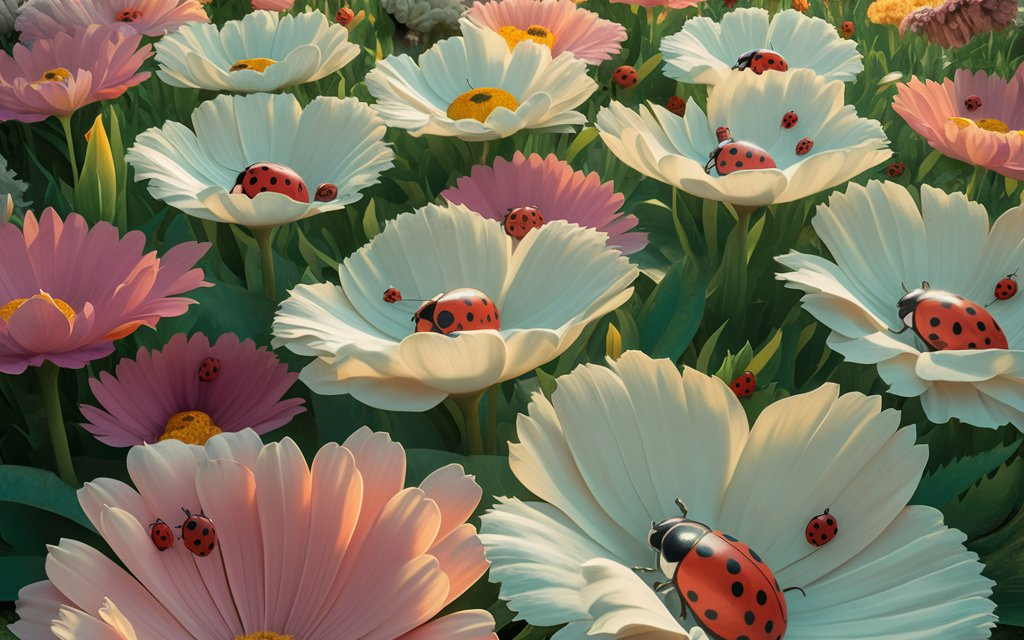Have you ever watched a ladybug in your garden and wondered how to attract ladybugs to your garden? These small, vibrant beetles do more for us than just adding a splash of color to our plants. Ladybugs are fantastic natural pest controllers, helping maintain the health and beauty of our gardens without the need for chemical pesticides. This article will explain why attracting ladybugs to your garden is beneficial and provide you with detailed steps on how to make your garden a ladybug haven.

Why Ladybugs Are Beneficial to Your Garden
Natural Pest Control
One of the main reasons to attract ladybugs to your garden is their impressive ability to control pests. Ladybugs are voracious eaters, particularly fond of aphids, mites, and scales. A single ladybug can consume up to 5,000 aphids in its lifetime. By keeping these harmful pests in check, ladybugs help prevent damage to your plants and reduce the need for chemical interventions.
Enhancing Plant Health
Healthy plants are the cornerstone of a thriving garden. By controlling pest populations, ladybugs indirectly contribute to improving overall plant health. Pest-free plants can focus their energy on growth and flowering rather than repair from damage, leading to more robust and vigorous greenery.
Promoting Biodiversity
Ladybugs are part of a balanced ecosystem. Inviting these beetles into your garden helps promote biodiversity by ensuring that predator and prey populations remain balanced. A diverse range of flora and fauna can lead to a healthier, more resilient garden capable of withstanding various environmental stresses.
Creating a Ladybug-Friendly Environment
Choosing the Right Plants
Choosing the right plants is crucial when it comes to attracting ladybugs. They are naturally drawn to certain types of plants that either provide them with food (in the form of aphids) or offer ideal environments for laying eggs.
Here is a table outlining some of the best plants to attract ladybugs:
| Plant Name | Characteristics | Additional Benefits |
|---|---|---|
| Dandelion | Common weed, yellow flowers | Attracts aphids, providing food for ladybugs |
| Marigold | Bright flowers, strong scent | Helps repel other pests like nematodes |
| Dill | Feathery foliage, small yellow flowers | Culinary spice, attracts lacewings and hoverflies |
| Chives | Green stalks, purple flower heads | Edible, attracts bees and butterflies |
| Yarrow | Flat-topped white or pink flowers | Attracts other beneficial insects as well |
| Fennel | Tall stems, umbrella-like flowers | Aromatic herb, serves multiple pest control roles |
Incorporating these plants into your garden not only attracts ladybugs but also adds aesthetic value and diversity to your green space.
Ladybugs Improve Mental Health
Ladybugs can have a surprisingly positive impact on our mental health, both directly and indirectly. These charming insects contribute to our well-being in various ways, starting with fostering a deeper connection to nature. Observing ladybugs in your garden can promote mindfulness and present-moment awareness, which has been shown to reduce stress and anxiety. Gardening itself is a stress-reducing activity, and the presence of these beneficial insects makes it even more enjoyable. Knowing that ladybugs are naturally controlling pests can alleviate worries about plant health, further reducing garden-related stress.
Successfully attracting ladybugs to your garden provides a sense of achievement, boosting self-esteem and confidence in your gardening skills. For both adults and children, learning about ladybugs and their role in the ecosystem can be intellectually stimulating, promoting cognitive health and lifelong learning. The bright colors and distinctive patterns of ladybugs are visually appealing, offering aesthetic pleasure that can uplift mood and provide simple moments of joy.
Using ladybugs for natural pest control reduces the need for chemical pesticides, which can be a source of stress for health-conscious gardeners. In many cultures, ladybugs are considered symbols of good luck, and this positive association can provide a psychological boost when spotted in the garden. For those engaged in horticultural therapy, ladybugs can be an exciting element to incorporate into therapeutic gardening programs, aiding in recovery and mental health management.
Many adults find that ladybugs evoke fond childhood memories, triggering positive emotions and a sense of comfort. Lastly, knowing that ladybugs are helping to keep your garden healthy can reduce anxiety about pest infestations and plant diseases. While these benefits may seem small individually, collectively they contribute to a more positive, nature-connected gardening experience that can significantly improve overall mental well-being.
Providing Shelter
In addition to attracting ladybugs with food sources, it’s essential to provide them with adequate shelter. Like all creatures, ladybugs need a safe place to rest and reproduce. Simple practices can make a world of difference.
Consider these shelter options:
- Plant dense foliage: Plants like ferns, angelica, and cilantro create a dense, bushy habitat that ladybugs find appealing.
- Install ladybug houses: You can purchase or build ladybug houses that offer protection from the elements and predators.
- Ground cover: Dead leaves, mulch, and stones on the garden floor also provide excellent hiding spots.
- PACKAGE AND SIZE: Ladybug wind chime about 4.9″L x 4.3″H(12.5 x 11cm), bell: 1.9″L x 1.4″H (4.8 x 3.6cm), beads: 1.4″L x…
- DURABLE METERIAL: Ladybug wind bells are made of high quality iron with painted glass. Not easy to rust or fade, can be …
- CUTE LADYBUG: The ladybird shaped design and delicate pendants makes this wind chime an excellent decoration, bringing b…

- 【LADYBUG HAIR CLIP】Cartoon ladybug design, full of fun, simple design, easy to fix hair style. It can match your differe…
- 【APPLICATION】Suitable for thick, fine, curly or straight hair, non-slip design, can be tightly fixed in the hair, multip…
- 【PERFECT GIFT】Suitable for women girls children hairstyles and daily wear. As a holiday or birthday gift for your daught…

Ensuring a Water Source
Ladybugs need water just like any other living organism. By providing a reliable water source, you make your garden even more inviting. However, it’s crucial to ensure that the water source is shallow to prevent the ladybugs from drowning.
Consider using:
- Shallow dishes filled with water and pebbles where ladybugs can safely drink.
- Misting your plants occasionally to create small water droplets for the ladybugs to sip.
Organic Gardening Practices
Avoiding Chemical Pesticides
Chemical pesticides are detrimental not only to harmful pests but also to beneficial insects like ladybugs. By eliminating the use of chemical pesticides, you ensure a safer environment for ladybugs to thrive.
Instead of chemicals, consider these natural pest control methods:
- Neem oil: Effective against a variety of pests while being non-toxic to ladybugs.
- Insecticidal soap: Safe for beneficial insects when used appropriately.
- Physical barriers: Such as row covers to keep pests away without harming ladybugs.
Encouraging a Balanced Ecosystem
The more diverse your garden ecosystem, the more likely it is to naturally regulate pest populations. By promoting a habitat that supports various beneficial insects, birds, and soil organisms, you create a garden that is both self-sustaining and resilient.
Some tips to foster a balanced ecosystem include:
- Plant diversity: Incorporate a variety of plants to attract different types of beneficial insects.
- Composting: Healthy soil leads to healthy plants, which are more resistant to pests.
- Avoiding monocultures: Single-crop gardens are more susceptible to pest outbreaks.
Seasonal Considerations
Attracting Ladybugs in Different Seasons
Each season presents unique opportunities and challenges when it comes to attracting ladybugs. Understanding these seasonal dynamics can help you maintain a continuous presence of ladybugs in your garden throughout the year.
- Spring: A time for planting new flowers and herbs that attract ladybugs. Ensure early bloomers like dandelions are available.
- Summer: Keep the garden well-watered and provide shaded areas to protect ladybugs from extreme heat.
- Autumn: As temperatures drop, ladybugs seek out warm winter shelters. Provide leaf litter and mulch to accommodate this need.
- Winter: Although ladybugs are less active, some species overwinter in gardens. Ensure there is enough mulch and organic matter to serve as a winter refuge.
Preparing for Ladybug Overwintering
As winter approaches, ladybugs look for insulated places to hibernate. By preparing your garden to accommodate these needs, you can ensure a head start on your ladybug population for the next growing season.
Here are some steps to prepare your garden for overwintering ladybugs:
- Leave fallen leaves: Instead of clearing away all the fallen leaves, allow some to remain to provide natural insulation.
- Mulch generously: Apply a thick layer of mulch to garden beds.
- Avoid over-pruning: Leaving some garden plants intact can offer additional shelter.

Encouraging Ladybug Reproduction
Identifying Ladybug Eggs and Larvae
Understanding the different life stages of a ladybug can help you recognize whether they are reproducing successfully in your garden. Ladybug eggs, larvae, and pupae all look different from adult ladybugs.
- Eggs: Usually laid in clusters on the undersides of leaves, they are small, yellow, and oval-shaped.
- Larvae: Ladybug larvae look like tiny alligators, dark with some bright spots. They are the most voracious eaters.
- Pupae: During this stage, ladybugs attach themselves to a leaf and transform, appearing somewhat motionless.
Creating a Supportive Reproductive Environment
For ladybugs to reproduce successfully, certain conditions need to be met:
- Abundant food supply: Ensure there are enough aphids and other pests for the ladybug larvae to consume.
- Sheltered areas: Protection from predators and harsh weather conditions is essential for egg-laying and larval development.
- Avoiding disturbances: Minimizing garden disruptions during the reproductive period can help ensure higher survival rates for ladybug eggs and larvae.
Recognizing and Addressing Issues
Ladybug Predators
While ladybugs are effective garden protectors, they have their own set of predators. Birds, spiders, and some larger insects may prey on ladybugs. Understanding these threats and taking steps to mitigate them can help maintain your ladybug population.
Steps to Mitigating Predators:
- Bird deterrents: Use reflective tapes or scarecrows to keep birds at bay.
- Providing hiding spots: Dense foliage and ladybug houses can offer protection from predators.
- Avoiding pesticide residue: Even if you’re using organic methods, ensure these don’t inadvertently harm ladybugs.
Disease Prevention
Ladybugs, like any other creatures, are susceptible to diseases. Ensuring a clean and healthy environment can go a long way in preventing disease spread.
Common diseases and preventative measures:
- Fungal Infections: Keep the garden well-ventilated and avoid over-watering to prevent fungal growth.
- Bacterial Infections: Clean garden tools and avoid introducing infected plants.
- Parasitic Wasps: Monitor and remove any parasitized ladybugs to prevent the spread.
Monitoring and Maintenance
Regular Garden Inspections
Regularly inspecting your garden can help you monitor the health of your ladybug population and spot any potential issues early. Look for signs of ladybug activity, such as the presence of eggs, larvae, and adults.
Seasonal Garden Maintenance
Adapting your garden maintenance practices based on the season can ensure a continuous and thriving ladybug population:
- Spring: Plant ladybug-attracting flowers and herbs.
- Summer: Maintain water sources and shaded areas.
- Autumn: Prepare for overwintering by adding mulch and leaving some garden debris.
- Winter: Protect overwintering ladybugs by minimizing garden disturbances.
Updating Plant Varieties
As your garden evolves, you may need to update your plant varieties to continually attract ladybugs. Keeping a variety of flowering plants that bloom at different times can ensure ladybugs have food throughout the year.
Understanding Ladybug Behavior
Daily Activities
Ladybugs are most active during the day, particularly during warm, sunny conditions. They spend their time hunting for food, mating, and laying eggs.
Seasonal Behavior
Ladybugs have distinct seasonal behaviors:
- Spring/Summer: Actively hunt and reproduce.
- Autumn: Seek out warm shelters for overwintering.
- Winter: Remain relatively inactive, hibernating in sheltered spots.
Misconceptions About Ladybugs
All Ladybugs Are Beneficial
Not all ladybug species are beneficial to your garden. The invasive Harlequin ladybug, for example, can outcompete native species and become a pest in its own right. Understanding which ladybug species inhabit your garden can help you maintain a beneficial population.
Ladybugs Can Survive Without Human Intervention
While ladybugs are adept survivors, creating a supportive environment can significantly enhance their presence and efficacy in your garden. Providing food, shelter, and water ensures they stick around and continue to contribute to your garden’s health.
Conclusion
Encouraging ladybugs to take up residence in your garden can transform your gardening experience. By understanding their benefits, creating a welcoming environment, and maintaining it throughout the seasons, you can enjoy a healthier, more vibrant garden. Not only will you reduce the need for chemical pesticides, but you’ll also foster a thriving ecosystem that enhances the natural beauty and resilience of your green space. So, why not give it a try? Your garden—and the ladybugs—will thank you.

My name is Michelle Warren, and I’m the founder of Peaceful Gardening. As a 10-year breast cancer survivor, I’ve discovered the profound therapeutic power of gardening. This journey has not only helped me recover but has also become my passion and a source of ongoing peace and joy.
Peaceful Gardening was born from my desire to share the healing benefits of gardening with others. Whether you’re facing health challenges, dealing with stress, or simply looking to connect more deeply with nature, this space is for you.
Over the past decade, I’ve cultivated not just plants, but a deep understanding of how gardening can positively impact mental health. I’ve worked with local community gardens, led workshops on mindful gardening practices, and collaborated with mental health professionals to develop gardening-based stress reduction programs.
Peaceful Gardening was born from my desire to share the healing benefits of gardening with others. Whether you’re facing health challenges, dealing with stress, or simply looking to connect more deeply with nature, this space is for you.
Here, you’ll find evidence-based advice on using gardening as a tool for mindfulness, stress relief, and emotional healing. I share personal stories, practical tips, and scientifically-backed information on how to create your own therapeutic garden space, no matter the size of your yard or balcony.
My mission is to help you discover the joy, peace, and healing that comes from nurturing plants and connecting with nature. Join me in exploring how the simple act of tending to a garden can transform your mental and emotional wellbeing.
Welcome to Peaceful Gardening – let’s grow together towards better mental health!”



